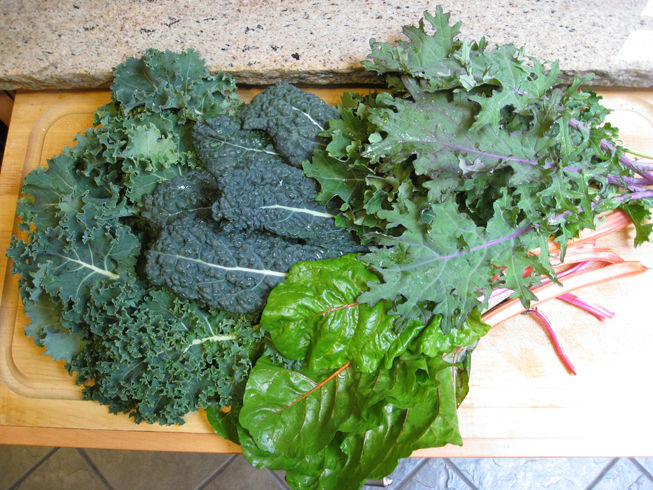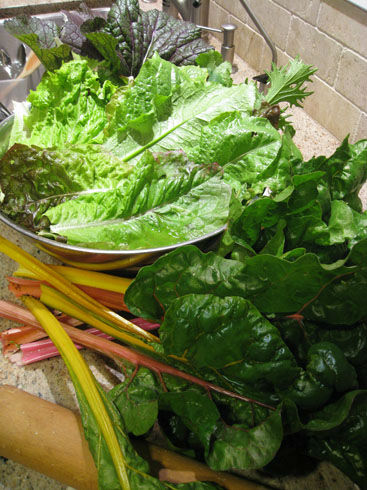An eager gardenerd wrote into Ask Gardenerd last week asking, “What crops can I grow in low-light conditions (5 hours of sunlight)?” Since not everyone has access to full sun, we’re guessing this question has come up at least a few times for our readers. Here’s the answer:
You’re in luck! There are many low-light crops that will keep you eating all season long. With 5 hours of sunlight, you can grow all the greens, as well as many root crops. Let’s look at this more closely.
Salad Greens
Lettuces of all sorts grow well in low light. In fact you only need 3-4 hours per day.
Mustard greens like Mizuna, Osaka purple mustard, and tatsoi only need a few hours.
Arugula is slower to bolt in low-light and won’t be as fierce. Cilantro and other herbs that bolt in heat (like parsley) will also grow in just a few hours of sunlight. In fact, most herbs (except basil and rosemary) do well in less than optimal lighting.
Spinach is another plant that bolts to seed quickly in heat, but in low-light conditions it doesn’t suffer as much.
Kale
If you love kale, you’ll be happy to know you can keep it growing in spaces with 3-4 hours of sunlight per day. Lacinato (dino), Red Russian, Curly and Roja kales all do well.
Chard
Swiss chard is another great crop to grow in low-light conditions. It may not be as large as when grown in full sun, but you’ll still be able to enjoy tender leaves when you want them.
Roots
Yes, indeed, you can grow carrots, parsnips, beets and radishes in locations with 4 hours of sunlight or more. Some say you can grow potatoes in low-light conditions too, we’ve never tried it, but go for it!
Peas
Peas produce pods, so they need more light than greens, but they can still be grown in 5 hours of sunlight.
Green onions
Add a little excitement to your garden with some green onions. They grow well in under 5 hours of light.
Generally speaking, if it produces a fruit, it needs full sun. If it’s a leafy green, it can tolerate shade. Just keep an eye out for legginess: long, spindly plants with space between the leaf sets. Leggy behavior means the plant is reaching for the sun. Short, stout plants indicate they are getting enough light. Use this as a guide to see what works well in your garden and you’ll do just fine.
Thanks for writing in!
For more details about growing low-light crops, check out this chart from Mother Earth News.










Thanks, Christy! That is exactly the info. that I needed. Super helpful!